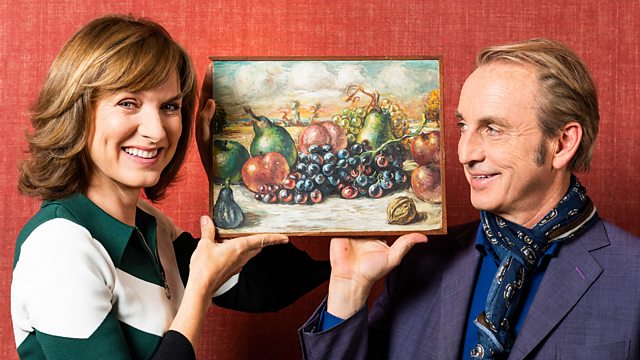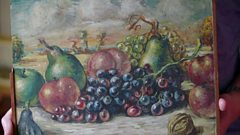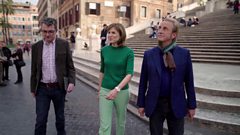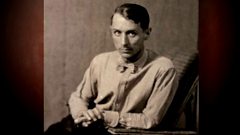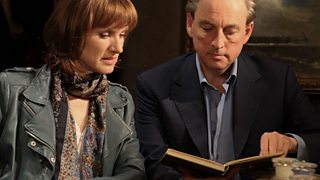De Chirico
Bought for just Β£1, could a small still life be the work of one of the masters of early 20th-century art, Giorgio de Chirico?
In this episode, Fiona and Philip investigate what could be one of the best bargains ever seen on Fake or Fortune? Could a junk shop find, bought for Β£1 almost 30 years ago, turn out to be by one of the masters of modern European art, Giorgio de Chirico? If itβs genuine, this Β£1 painting could be worth up to Β£50,000. Not a bad return!
The painting is an unusual still life depicting fruit in a windblown landscape. It belongs to Bob Kay, who bought it from a Hampshire bric-a-brac shop called Aladdinβs Cave in the early nineties. At the time he was working as a porter at a local auction house and had an eye for art. On the advice of Christieβs, he submitted the picture in 1995 to the de Chirico Foundation in Rome. After two years, the result came back negative β while most of the committee thought it could be a de Chirico, one person said it was not. If the team is going to overturn this decision, theyβll need to find convincing new evidence.
Their journey starts in Rome where de Chirico lived for much of his life. Born in Greece, he was a revolutionary 20th-century artist whose work would inspire Salvador Dali, Rene Magritte and Max Ernst, earning him the title The Father of Surrealism. Unfortunately, with great success comes a problem β de Chirico is massively faked. In fact, he is thought to be the second most forged Italian artist of all time. Among the forgers were surrealist followers who delighted in playing games with the art world, but also professional fakers looking to make a quick buck, and even de Chirico himself. He would backdate paintings completed later in life to pretend they were painted in his youth, allowing him to sell them for much more.
Tracing the provenance is a challenge: Fiona has to explain how this painting started life in a Roman studio but ended up in a Hampshire junkshop. In an unassuming south London flat, she tracks down letters written by de Chirico himself to a friend in Britain. These describe paintings sent to the UK as gifts and keepsakes. Could our painting be among them?
Finally, in a Fake or Fortune? first, this Β£1 picture is taken to a nuclear laboratory in Florence to be put through some cutting-edge tests. A splinter of the wooden picture board is subjected to βbomb curve analysisβ. This uses the rapid rise in radioactive material found in all living creatures after nuclear bomb testing in the 1950s to pinpoint a date for when the board was made. The test should show whether the picture was painted at the right time to be by de Chirico himself.
Last on
More episodes
Previous
Clips
-
![]()
Bob's one pound painting
Duration: 02:11
-
![]()
Rome - de Chirico's home city
Duration: 01:11
-
![]()
De Chirico and fakery
Duration: 01:46
Credits
| Role | Contributor |
|---|---|
| Presenter | Fiona Bruce |
| Presenter | Philip Mould |
| Director | Guy Arthur |
| Producer | Christopher Boreham |
| Series Producer | Lucy Swingler |
| Executive Producer | Judith Winnan |
Broadcasts
- Thu 8 Aug 2019 21:00
- Sun 11 Aug 2019 16:50ΒιΆΉΤΌΕΔ One except Wales & Wales HD
- Wed 11 Sep 2019 01:05
- Mon 24 May 2021 20:00
- Tue 25 May 2021 01:30
